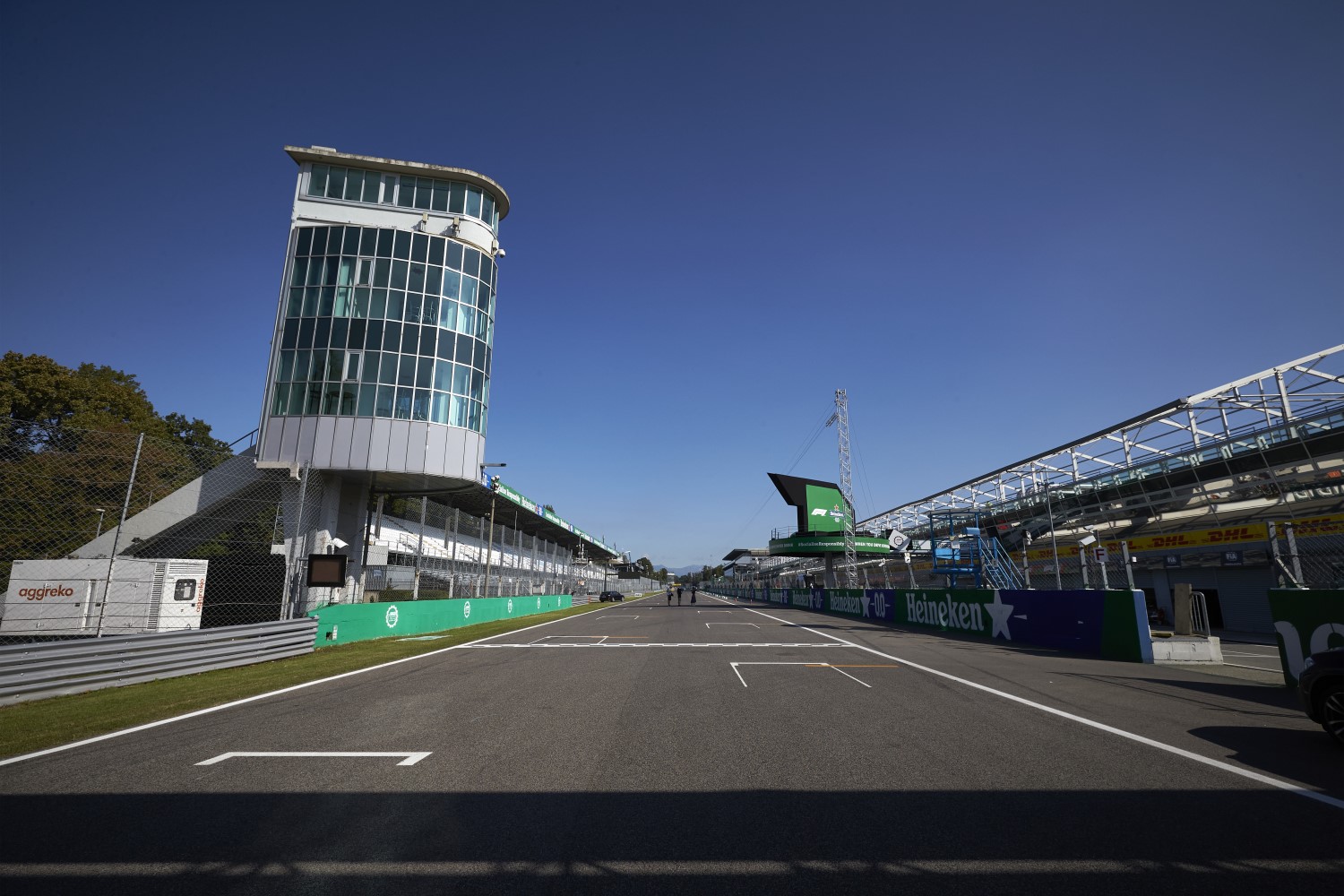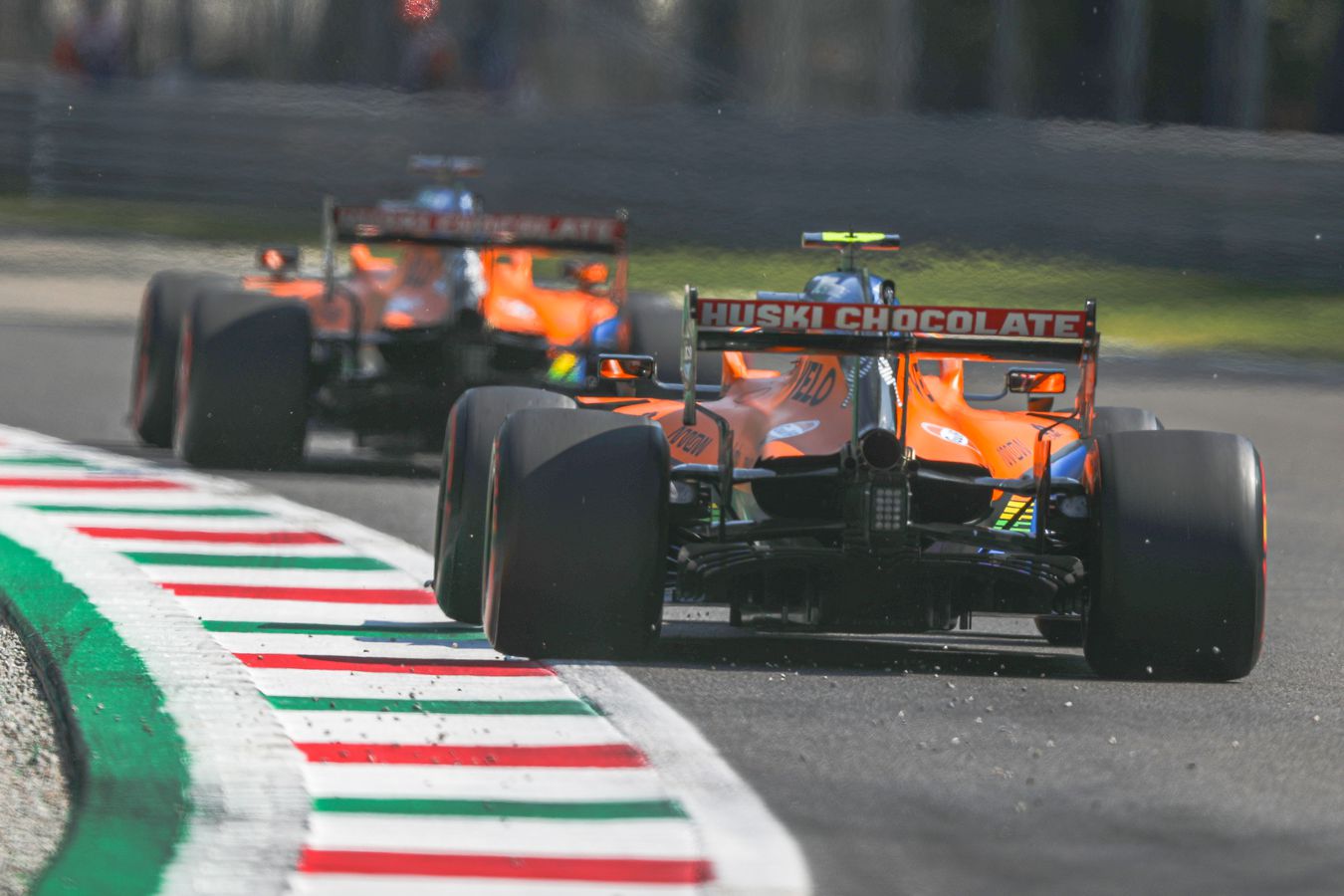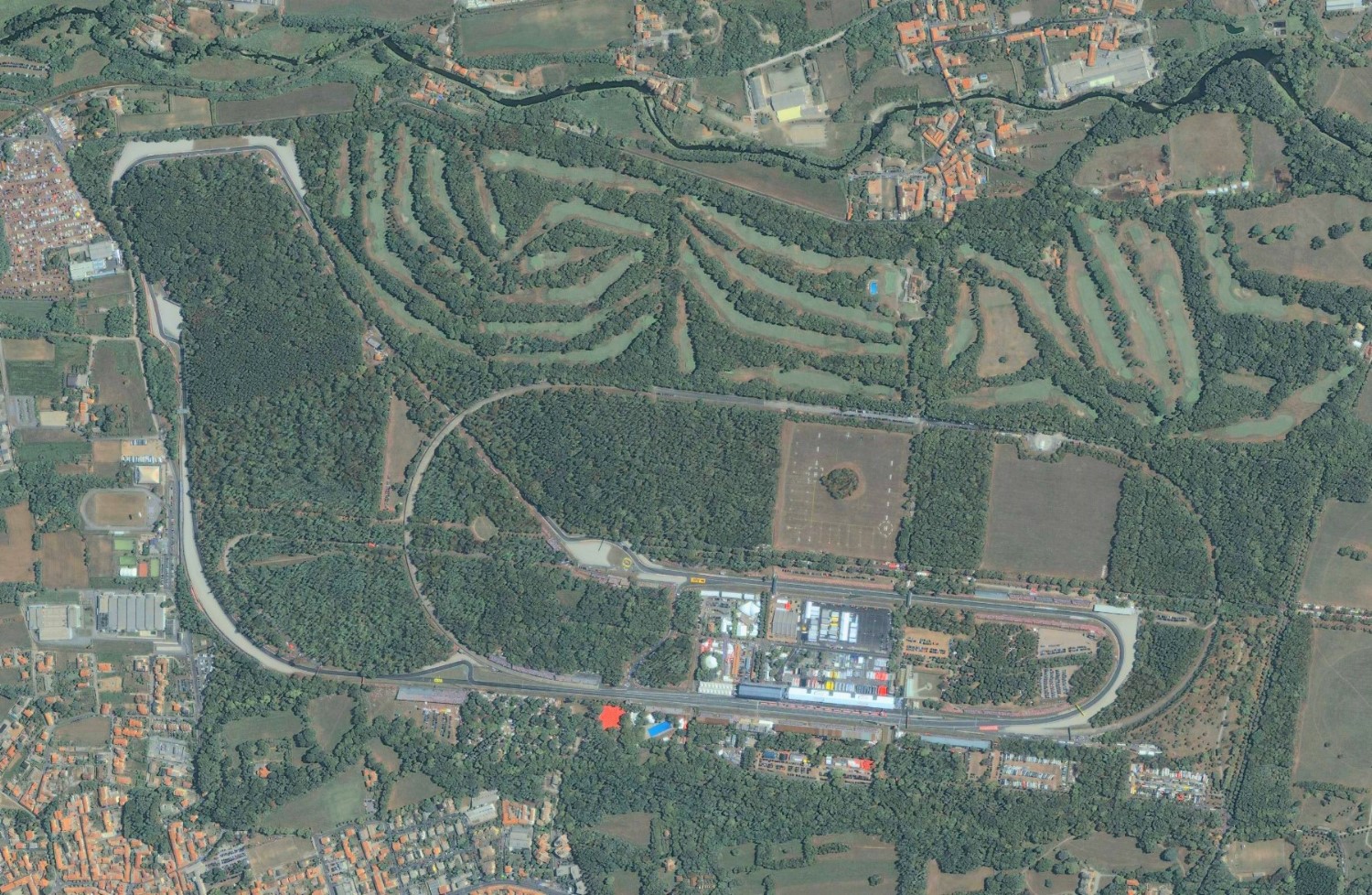F1: Italian GP at Monza Preview
The F1 teams are preparing for their third GP in as many weeks and this time it’ll be fast and frenetic, with the high-speed Autodromo Nazionale Monza hosting Formula 1’s Italian Grand Prix.
No circuit in the world has been graced by Formula 1 machinery more often than Monza, with the track absent only once – in 1980 – since the inception of the world championship in 1950. Set within the grounds of the leafy Parco di Monza, with the Alps visible on a clear day, the venue is renowned for its high-speed sections, while the decaying banked oval continues to act as a memorial to the circuit’s history. It will be Formula 1’s second visit to Italy this year, following on from April’s trip to Imola, which held the Emilia Romagna event.

Modern Monza has remained largely untouched since the turn of the millennium, with lengthy straights punctuated by heavy braking zones, chicanes and a handful of medium-speed corners. The low-downforce packages sported by Formula 1 teams means speeds approaching 370km/h can be achieved while last season Lewis Hamilton covered 5.793km in just 1:18.887s to set a new fastest average lap speed record of 264.363km/h during qualifying.
Following on from its debut at Silverstone the second trial of F1 Sprint, a duration of 18 laps, will take place at Monza.
What to watch out for
Sprint qualifying. Yes, it’s back after making its debut at the British Grand Prix earlier in the season. Many of you probably know the deal by now: qualifying on Friday, sprint qualifying on Saturday, and grand prix on Sunday. But for those in need of a refresher, here’s how a breakdown of this weekend’s format…
There will be just one practice session on Friday before qualifying. This qualifying session is the same as a normal F1 qualifying session but, instead of determining the grid for Sunday’s race, it will determine the grid for sprint qualifying which will take place on Saturday after another one-hour practice session. Sprint qualifying is a 100 km race – that’s 18 laps of Monza – lasting around 25-30 minutes. The finishing order will decide the grid for the grand prix and points will be awarded to the top three finishers – three for the winner down to one point for third.
Right, now that’s out of the way, what else should you watch out for? Well, there should be a large helping of overtaking – certainly more than we saw at the Dutch Grand Prix. Zandvoort is all about narrow twists and turns, but Monza is all about long straights – it’s not called the ‘temple of speed’ for nothing you know – and this should provide plenty of opportunity for slipstreaming and overtaking. In fact, slipstreaming could be a big talking point this weekend, particularly in qualifying – and by qualifying we mean the one on Friday, not Saturday. Drivers will jockey for track position that can give them a chance to take advantage of tow.
The long straights inevitably dominate the car setup, but the corners, curbs and change of direction through the Ascari complex can’t be ignored. Balancing all these requirements in a single free practice session before the cars are placed in Parc Ferme will be an interesting challenge for all the teams. Additionally, like Silverstone, the qualifying session takes place in the early evening, which will change the tire behavior and require a slightly different approach.
This weekend the teams have the middle of the Pirelli compound range, with each driver getting two sets of the Prime, four sets of the Option tire and six sets of the Qualifying compound. One of the key decisions facing the teams will be which compound to use for the Sprint Qualifying session, and which to save for the all-important Grand Prix on Sunday.

Monza’s many straights mean the throttle is pinned to the floor for much of the lap and it’s one of the most power-sensitive circuits on the calendar. The need for speed will see cars running the least amount of downforce they have all season – cue skinny wings and the removal of unnecessary aero flips and flicks on the bodywork – as teams seek to minimize drag and maximize straight-line speed.
It’s not all about the straights though, speed exiting the corners onto the straights is crucial. The aim is to carry speed onto the straights by riding the curbs, coping with rapid changes of direction and having good traction coming out of the chicanes and Monza’s famous final corner, Parabolica, which has been renamed ‘Curva Alboreto’ in honour of the late Michele Alboreto, who raced for Ferrari in the mid-1980s.
Fact File: Italian Grand Prix
- The Italian Grand Prix will be the second race weekend of the 2021 F1 season to trial the new Sprint Qualifying Race format, with a practice session and standard Qualifying on Friday, a practice session and the Sprint Qualifying Race on the Saturday, and the normal race on the Sunday.
- Monza is nicknamed ‘Temple of Speed’ for a reason… 78% of the lap time and 85% of the lap distance are taken at full throttle, the highest of any F1 track.
- The tow is incredibly powerful in Monza and often impacts strategy in Qualifying. In 2020, the difference between a lap with a tow and without a tow was around 0.7 seconds.
- A lap of Monza requires just 36 gear changes, one of the lowest figures on the F1 calendar, because a large portion of the driving is spent in eighth gear on the long straights.
- You might expect Monza to have the highest maximum speed of any track on the F1 schedule, but this isn’t true. It has the third-highest max speed, 340 km/h, behind France (341 km/h) and Mexico (350 km/h).
- Monza has the lowest downforce level of the year, requiring a special rear wing for the event. This is a talking point every year at the Italian Grand Prix, but there would still be enough downforce to – in theory – drive a car upside down.
- The Italian GP venue is one of the most power sensitive tracks in F1, even a modest increase in power can have a sizeable impact on lap time. This is in part due to the long straights, but also because there are a lot of low-speed corner exits onto those long straights, which demand a lot more power in those acceleration zones.
- The lower downforce levels at Monza combined with the long straights decreases the temperature of the tires, resulting in more frequent wheel lock-ups than at other tracks. This also impacts brake stability as it makes the car more nervous and unpredictable under braking, increasing the possibility of a lock-up. A lot of time can be found in these slow-speed chicanes and big braking zones, but the run-off areas can be unforgiving if you make a mistake.
- The fast Curva Grande (Turn 3) and Parabolica (Turn 11) counterbalance the slow chicanes to give Monza the highest average corner speed of any F1 track.
- Mechanical grip at Monza is crucial due to the amount of acceleration zones out of low-speed corners, meaning the track has the third-highest traction demand of the F1 season.
- The exit curbs at Monza offer up poor traction and a bumpy ride, so, due to the importance of propelling the car down the long straights that follow, drivers sometimes avoid the exit curbs altogether to get the best run out of the turn.
- The average ambient temperature at Monza (25°C) is on the higher end of the scale when it comes to 2021 race locations, but the average track temperature (40°C) is on the lower end. This is because the tarmac is lighter in color (gray compared to black) and therefore doesn’t soak up the heat as much. There is also a lot of shade created from the trees in the park Monza is located in.
- The high-speed nature of the track means the Italian Grand Prix is often a very short race, if it runs uninterrupted, usually taking around one hour and 15 minutes. However, the quick lap means you can fit more runs into practice and Qualifying sessions.
- Some corners at Monza, like Ascari, are heavily dominated by how well your car handles the curbs on the entry. If the car is stable over curbs, drivers can really attack the corner entry of Turn 8 and almost straight line Turns 9 and 10. But if the curbs upset your car too much, mistakes can easily be made, and a lot of time can be lost.

Keys to the Race
- The Italian Grand Prix has traditionally played out as a one-stop race thanks to a pitstop costing around 25 seconds to complete, compounded by the high-speed lap times on track. In 2020, the strategy was upended by both a Safety Car and a red flag, helping Lance to secure a podium, underlining how interruptions can decide a race. Tyre allocation for Monza is the C2, C3 and C4 compounds for the seventh time this year.
- The run to Turn One can be make or break. It’s a 610m sprint from pole to Turn One, the third-longest of the year. With a tight chicane immediately following, there’s a significant opportunity to gain places, but a bold and risky overtake can also bite back.
- While 2020 featured just 25 overtakes, it was largely due to the disrupted race. In 2019 and 2018, it was far more representative with 39 and 41 respectively. Interestingly, just 56% of overtakes in the last three years used DRS. Key overtaking spots are the long run to Turn One and under hard braking at Turn Four.
Unlocking the Lap
In qualifying, it’s not unusual to see drivers backing up on the entry to the Parabolica because a bad exit can ruin a lap before it’s even truly begun.
Drivers will exit the corner at high speed, crossing the start line at speeds of over 300km/h for one of the longest straights on the calendar.

With the benefit of DRS, drivers will nudge above 340km/h in eighth gear as they prepare to slam on the brakes for the first chicane: Variante del Rettifilo.
Dropping to second gear, and roughly 80km/h, it’s a quickfire right-left turn where first-lap accidents usually occur – and someone going in too hot will take to the escape road on the left.

A good exit out of Turn Two sets up the flat-out and gradual bend of Turn Three that leads to the following corner. Slipstreaming and overtaking is common in this section as drivers get back above the 300km/h limit ahead of Turn Four: Variante della Roggia.
Drivers move to the outside and brake at around the 100m board for a mid-speed chicane, entered at around 120km/h in third gear, again there’s an escape road, this time to the right, for those who overcook it.

On the outside of the corner lies an aggressive curb that is best avoided because it can easily damage the floor.
The best line is to clip the inside of the curb at Turn Five while avoiding the bump ahead of the Lesmos. While it’s a sharp right-hand corner, it’s still taken in fifth at 190km/h, following a dab of the brakes.
Drivers move slightly left on the exit and make the most of all available track, running across the outside curb, ahead of the second Lesmo that quickly follows, which is taken in the same way as the first Lesmos.
The exit here is crucial because it’s another long straight ahead; with the benefit of DRS. The run to Ascari is also likely to be one of the last chances to make an overtake ahead of the final sector.
Ascari is a high-speed ess bend, where drivers clip the inside curb on entry at 180km/h, shifting right and using the curb, lifting slightly for Turn 10. It’s very, very quick.
Drivers move to the outside to position themselves for the exit, braking slightly and maintaining a high average speed, clearing the left-right-left at over 225km/h.
Parabolica is approached at over 300km/h for the final corner of the lap. Again, braking at around the 100m mark, drivers switch from the outside on approach to the inside line of the corner, navigating at 225km/h.
The key is to unwind the steering wheel through the second half of the corner and to exit back on the main straight at over 275km/h, making sure not to run wide and lose the lap time, before powering back across the finish line.
